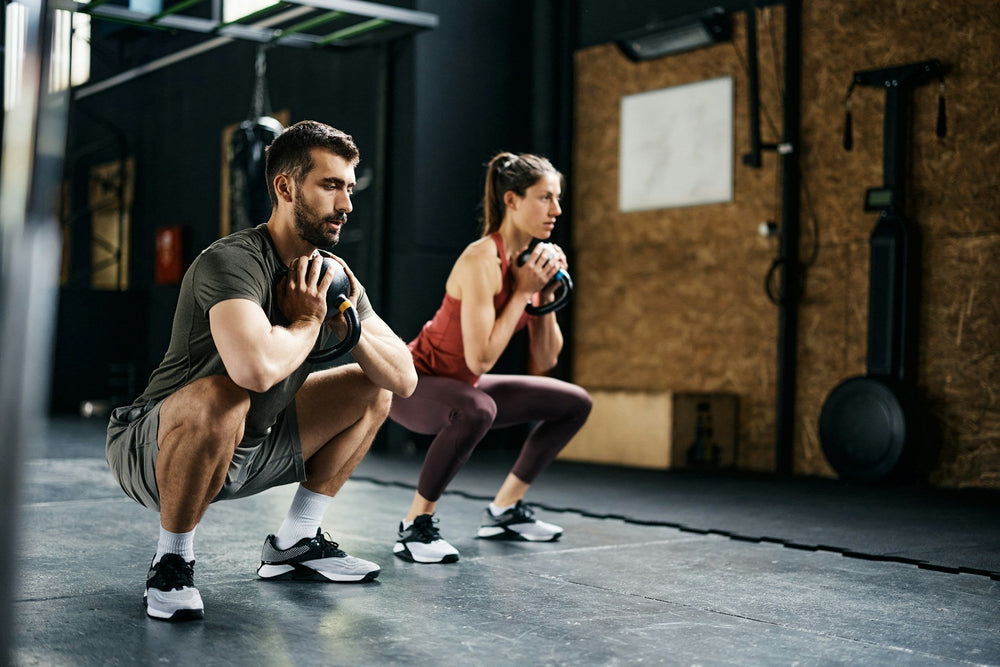Strength Training Exercises to Improve Running Performance

Running is great for health and fitness but puts much pressure on the body. Strength training can be a helpful partner to running, giving your routine that extra boost. By making your muscles stronger, you can run faster, longer, and with less chance of injury.
Muscles work in two ways for runners. They help you push off the ground and keep your posture steady. With a bit of strength training, you'll notice improvements in how you feel during and after each run.
Why Strength Training Benefits Runners
Strength training is a valuable asset for runners aiming to enhance their performance and stay injury-free. When you run, your body endures repetitive stress, which can sometimes lead to injuries. Strengthening the muscles around your joints helps absorb some stress, reducing the likelihood of common injuries like shin splints and knee pains. Adding strength exercises to your routine gives your body the tools to withstand these demands.
Stronger muscles lead to enhanced endurance. When your muscles are stronger, they can perform better over longer distances. This is because they use less energy for the same amount of work, allowing you to sustain your pace without tiring quickly. Well-conditioned muscles can also help maintain good posture during runs, which is crucial for optimising energy use.
Another key benefit of strength training is faster recovery after long or intense runs. Muscles regularly trained to handle stress recover more quickly, reducing the muscle soreness that often follows a big effort. This means you can return to your runs sooner, with less discomfort. Investing time in strength training thus improves not only your ability to run but your overall running journey.
Key Strength Training Exercises for Runners
Incorporating strength training exercises that focus on core and leg muscles is crucial for improving running performance. Here are some exercises and how they can benefit runners:
1. Squats and Lunges
These exercises target the quads, hamstrings, and glutes, essential muscles for running. They improve mobility and strength, helping push each step while maintaining balance.
2. Deadlifts
They are excellent for building hamstring and lower back strength. They aid in stabilising the core and hips, which is important for a smooth running form.
3. Upper Body Strength
Push-ups and planks strengthen the arms, shoulders, and core, supporting good running posture. A strong upper body helps maintain alignment and reduces fatigue during longer runs.
4. Balance Exercises
Single-leg balances and similar exercises enhance stability. They are vital as they mimic the single-leg stance phase of running, helping to develop ankle strength and coordination.
Consider adding these exercises to your routine twice a week. They don’t need to involve heavy weights; body-weight exercises can be highly effective. Focus on maintaining correct form and gradually increase the intensity as you become more comfortable. This targeted approach will help build the strength and resilience necessary to improve your running performance.
Designing a Strength Training Routine
Putting together a strength training routine that complements your running is straightforward once you know what to include. Start by aiming to incorporate strength training two to three times a week. On these days, either perform them on non-running days or right after your run for efficiency and to allow your body time to recover.
For beginners, it is essential to focus on using lighter weights and mastering proper form to avoid injuries. Start with body-weight exercises such as squats and lunges and gradually introduce weights as your confidence grows. Experienced runners can challenge themselves with heavier weights for increased muscle power and endurance. Ensure you maintain focus on each muscle group to offer balanced muscle development.
Be sure to intersperse strength days with rest days or light running days. This balance is critical for allowing muscles to recover and repair themselves, ensuring better performance during your runs. Watch your body for signs of fatigue to prevent overtraining, which can lead to setbacks and injuries.
Tools and Equipment for Effective Workouts
Utilising the right tools can vastly improve your strength training regime. Here’s a basic list of equipment suitable for facilitating effective workouts at home or in the gym:
- Dumbbells: These are versatile and can be used for multiple exercises targeting different muscle groups.
- Resistance Bands: Great for adding resistance and variety to your workouts, especially during travel or when space is limited.
- Kettlebells: Perfect for dynamic exercises that improve strength and cardiovascular fitness.
Creating a home workout setup doesn't have to be costly or complicated. A modest setup with a mat, some dumbbells, and resistance bands can provide a wide range of exercises to enhance your routine.
Incorporate guided training apps and videos into your routine to stay motivated and ensure correct exercise techniques. These resources can provide structure and variation in your workouts, helping you stay engaged and track improvements over time.
Conclusion: Maximising Running Performance
Integrating strength training into your running routine can be transformative. Not only does it enhance your running speed and efficiency, but it also builds resilience against injuries. You will notice improved strength and stamina by following a structured routine, choosing the right exercises, and using proper equipment. The balance between strength and running creates a harmonious routine that significantly enhances your overall performance.
Elevate your running journey with Sole Mate. Our expert team offers a range of running shoes in the UK designed to complement your training, enhance comfort, and boost performance. Discover how our innovative products can transform your running with a perfect fit tailored for you. Visit us today and experience the difference with Sole Mate.

